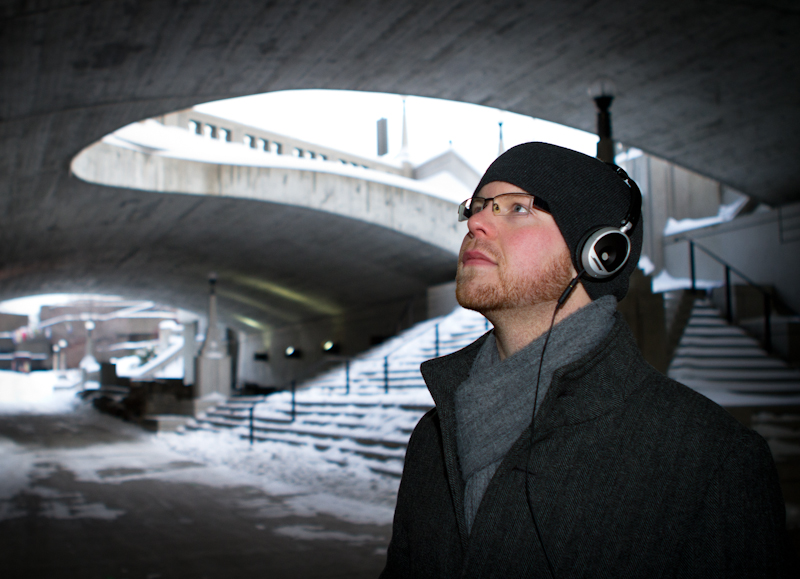
Engineering may seem like a pretty practical field of study for someone with an affinity for math who’s interested in a career involving buildings.
Matt Edwards’ mother didn’t quite agree. Her son had always been artistic and she pointed to the possible creative loss — less art and no room for music. As is the way of mothers, she was right.
Edwards followed his mother’s advice and ended up in the architectural studies program at Carleton. Architecture was perfect, Edwards says.
“It was the marriage between art and science,” he says.
Carleton has treated him well. In between his bachelor’s degree and his master’s, Edwards studied music for a year and is now a jazz pianist and a contract instructor at Carleton, teaching design studies and a workshop class to architecture students.
Edwards points to R. Murray Schafer’s ideas on how integral sound was to architecture as a main influence in his recent work with Polytectures, a narrated soundwalk of Ottawa.
Polytectures was created for the 2011 edition of the Electric Fields festival by Montreal-based artist Antoine Bédard, known as Montag in the art world.
The idea was to create a greater experience for urbanites with the architecture that surrounds them daily by connecting the buildings with music, Edwards says.
Local musicians created songs inspired by downtown buildings, and the songs accompany Bédard’s narration to form the audio tour. The route and songs can be downloaded online so people can do the walk around the city at their leisure.
Ryan Stec, Bédard’s artistic director, invited Edwards to contribute descriptions of the buildings on the soundwalk after reading Edwards’ thesis, which was based on the relationship between sound and space, Edwards says.
“It’s no secret that our world is dominated by visual things,” he says. “But our sense of space and our memory of places owe so much to sound.”
These “soundscapes” help identify memories with a particular place, Edwards says.
“You imagine the sound of Trinidad versus the sound of Paris. There’s an intrinsic difference there, something that will identify both places instantly,” he says.
Edwards helped pick buildings to profile for the tour and wrote text about particular buildings to help bridge the gap between architecture and music, and hopefully inspire the musicians’ pieces.
His goal was to use abstract terms that had meaning in both architecture and music, he says. For instance, if a building is made mostly of glass, this evokes themes of translucency and reflectivity which can be recreated in music.
Edwards says he was excited about Polytectures joining Winterlude for a winter version of the soundwalk. Ottawa tends to be “introverted,” he says, in advertising smaller art projects around the city. He was glad to see the city begin to foster different types of art.
As Edwards mulls over future jobs, schools, and music, he finds fulfillment in teaching about architecture and sound, a field he says hasn’t been fully explored in post-secondary education.
Edwards points to Schafer’s influence on him as one of the only teachers in this field.
“Teaching is such a great opportunity for me to have the chance to hopefully inspire architecture students,” he says.





